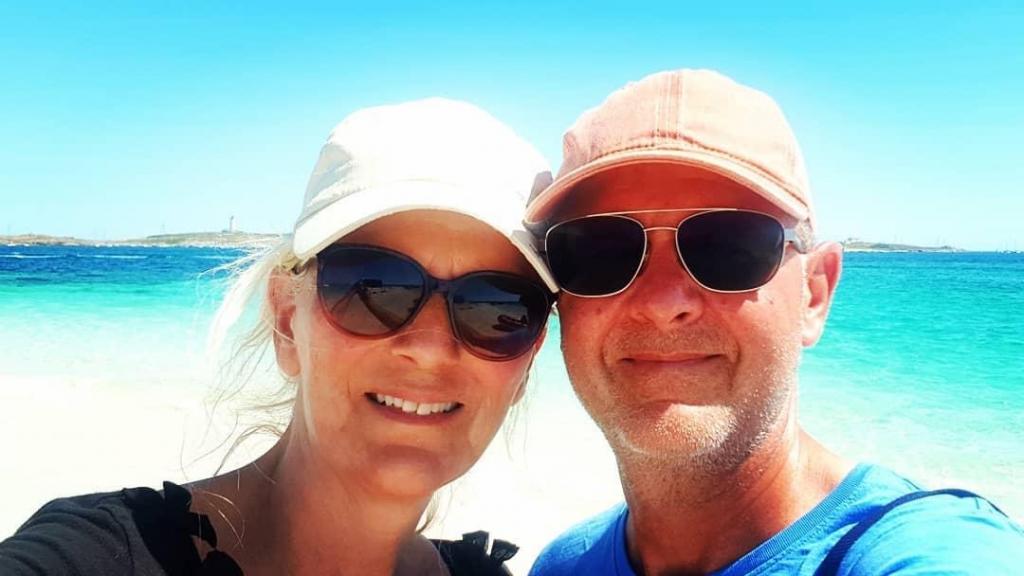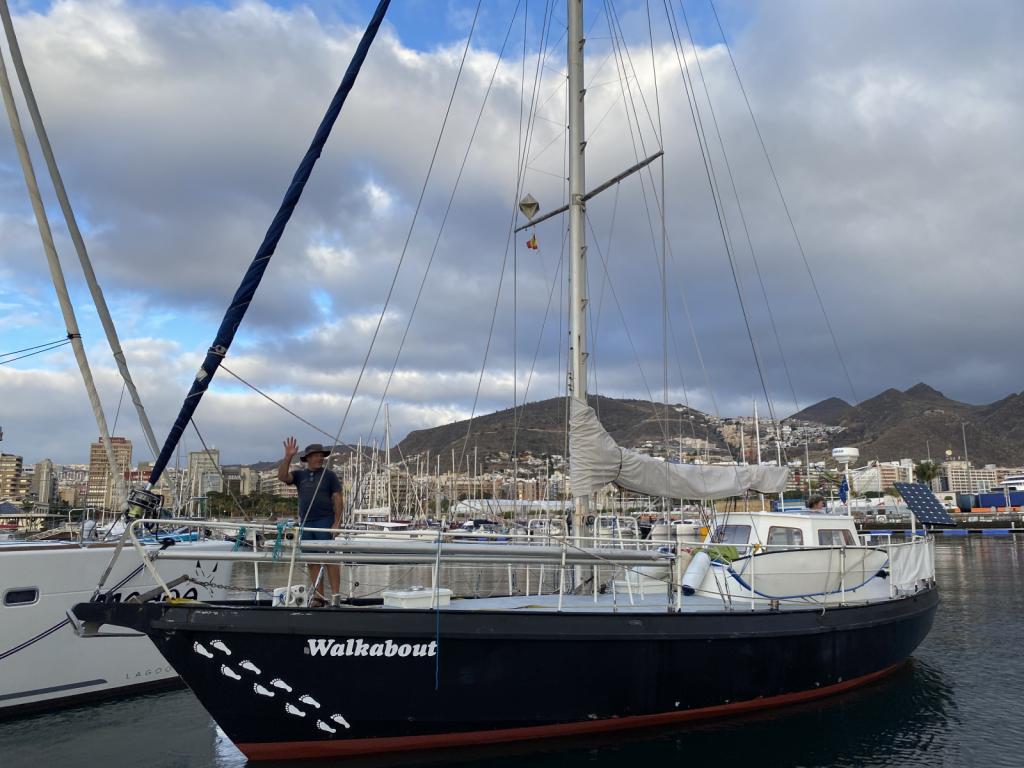When we arrive at a marina, we check out the neighborhood, of the marina, that is. As we go to our berth for the first time, we check how narrow our property will be - the width between the "pencil" dock on one side and the neighboring boat on the other side. Then we assess the current, the wind, and make our increasingly successful approach into our new neighborhood.
Next we look up to check out the aesthetics. We check the view, sounds, bird life, clarity of the water.
Lastly, and most importantly, we look at our neighbors. Often, they have already watched how we dock and helped with lines. Certainly, they note the make of our boat, the burgees (flags) we fly, and how well we have cared for Ithaka. Each neighborhood of boats is rich in variety, all with many stories to tell.
Our current marina in Santa Cruz de Tenerife is right in the city and serves as an important commercial hub, with ferry, cruise, and container ship traffic nearby. We had lots of space to angle in to our berth and some of the longer and wider pencil docks we have seen in a while. Near our pontoon, large (I mean large) catamarans and motor yachts wait for their next foray while young crews clean daily. On our pontoon, sadly, we have two sailboats that have seen better days and are in need of much attention. But, mostly, beautifully loved and traveled boats float near us.

Our nearest neighbors, Karen and Eric, left yesterday on "Maralief" for La Gomera, a nearby Canary Island. I think that I have their story mostly right. They are Dutch, retired a couple of years ago and set sail in their 20 year old, 40ish foot, Dutch model boat (I had not heard of the boat maker) in spite of Covid. They traveled along the French coast, crossed Biscay, explored the Spanish north coast ("the Ria's), and Portugal, spending last winter on the Portugese Algare coast. Their style of travel is to go somewhere that sounds interesting to them and then stay, for a week, a month, sometimes at anchor and sometimes in a marina. From the Canaries, they plan to head to Cape Verde in January and then cross the Atlantic to Surinam. We shared drinks, snacks, and advice. They suggested the best way to rent a car in Santa Cruz, where to hike, and how to make a mosquito covering for the companionway hatch.

Also on our pontoon, we met Thomas with his boat "Walkabout." His wife, Frauke, was visiting family back in Germany. We shared a wonderful pumpkin stew and naan made by Thomas and heard about a few of their adventures. I am not sure how many years ago Frauke and Thomas retired, but given the amount that they have adventured, it is hard to guess. If I remember this correctly, they left Germany with the goal of visiting their daughter in Argentina. After sailing there, they continued around Cape Horn and then made a 54 day passage to French Polynesia. Their boat is a 38ish foot steel hulled not young boat, and they have cared for Walkabout faithfully. She does not have a refrigerator - they cook a lot of dried bean, grain, and root vegetable stews on passage, and make bread.
With the boat name, Walkabout, you ask how does that relate to sailing? They also love to hike and have completed the Appalachian Trail (Frauke has done it twice), the Continental Divide trail, the 1900 mile Te Araroa in New Zealand. Frauke has now returned and they just sailed out to spend a few days in the Southern part of Tenerife and complete their final preparations for their 30-35 day nonstop passage from Tenerife to South Carolina. After they get to South Carolina, they plan to hike the 1000 mile Florida Trail. The Pacific Crest Trail will follow in the future.

And yet another amazing story - Sailing Vessel Ruffian. Ian and Fiona are a younger British couple and they will also travel across the Atlantic, but first they will go to The Gambia and travel up the Central Gambia River.
These sailors represent so many people we have met - friendly, warm, helpful, adventurous, flexible, self-reliant. They live on sailboats that are both ocean going vessels and cozy, comfortable "tiny homes". Marina life is a diverse ecosystem. We love being a part of this world.






Comments